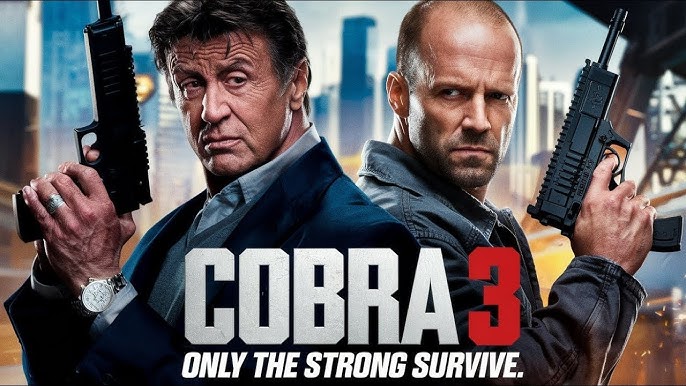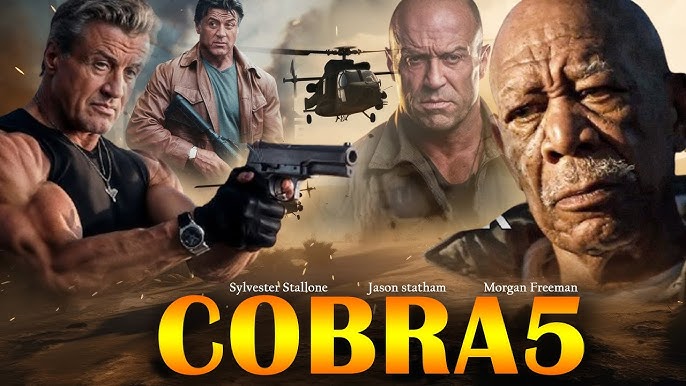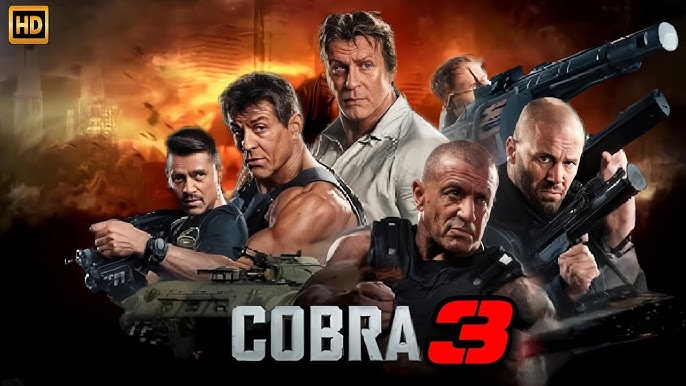Cobra 3 (2025) – The Return of the Viper

Cobra 3 (2025) roars onto the screen as a fierce, high-octane revival of the cult action saga that made Marion Cobretti a symbol of 1980s justice — raw, relentless, and unflinchingly cool. Four decades later, the legend returns to the streets, older but deadlier, in a story where vengeance, duty, and survival collide under the neon glow of a corrupt new world.
The film opens in Los Angeles, now drowning in chaos. Crime has evolved into something darker — organized not by gangs, but by faceless networks of power. When a wave of brutal assassinations rocks the city, a retired Cobretti (Sylvester Stallone) is forced out of isolation after one hit strikes too close to home. What begins as a personal vendetta quickly spirals into a war for the soul of justice itself.
Director Chad Stahelski brings his signature precision and ferocity to the franchise, merging the gritty spirit of the original with modern, kinetic filmmaking. Each gunfight, chase, and explosion feels handcrafted — brutal yet elegant, violent yet purposeful. The pacing is tight, the stakes immense, and the nostalgia razor-sharp.
The narrative introduces a new generation of warriors and criminals. Stallone’s Cobra finds himself partnered with a young, reckless detective played by Glen Powell — a mirror of his younger self — while facing off against an elusive cyber-terrorist kingpin (Idris Elba) whose philosophy of “order through chaos” forces Cobra to confront his own outdated ideals.
Stallone delivers one of his most stoic and soulful performances in years. His Cobretti isn’t the indestructible cop of the past, but a man wrestling with time, loss, and relevance. The gravel in his voice carries regret; his silence speaks louder than gunfire. He’s not fighting for glory anymore — he’s fighting because he’s the last one who still believes in the line between right and wrong.
Action choreography is nothing short of explosive. From a claustrophobic nightclub shootout to a rain-drenched freeway ambush, every set piece pulses with intensity. Stahelski’s direction infuses the violence with rhythm — fast, deliberate, and emotionally charged.
Cinematography captures the duality of the modern city: drenched in neon, shrouded in smoke, and pulsing with menace. The film’s visual style — part noir, part cyberpunk — transforms Los Angeles into both a battleground and a ghost of Cobretti’s past.

Sound design and score hit with brutal precision. Metallic echoes, roaring engines, and synth-driven undertones pay homage to the ’80s while embracing modern cinematic power. Brian Tyler’s haunting theme blends nostalgia with urgency, giving the film a heartbeat that never slows.
Themes of redemption, legacy, and justice in decay define Cobra 3. The film asks whether righteousness can survive in a world that no longer believes in heroes — and whether a man built to fight evil can ever truly walk away from it.
Supporting performances strengthen the emotional fabric. Glen Powell brings reckless energy and moral doubt; Idris Elba’s villain is chillingly intelligent, calm, and philosophical — a perfect foil for Cobretti’s direct brutality. Their dynamic turns the film’s violence into dialogue between old law and new chaos.
In conclusion, Cobra 3 (2025) is a triumphant resurrection — raw, atmospheric, and charged with emotion. Stallone’s return as the “Cobra” reminds audiences why old-school heroes still matter in a world obsessed with shades of gray. With blistering action, striking visuals, and a story that cuts to the bone, this film doesn’t just revisit the past — it reclaims it with fire and steel.
Related movies :
Related movies :
https://youtu.be/pMORcnLCo1E?si=y8vh-7XHJV_6vPd-
Related movies :
Related movies :
Related movies :
Related movies :
https://youtu.be/1rrZERwvxAo?si=hPpFJXaw80ZR-zsL
Related movies :










